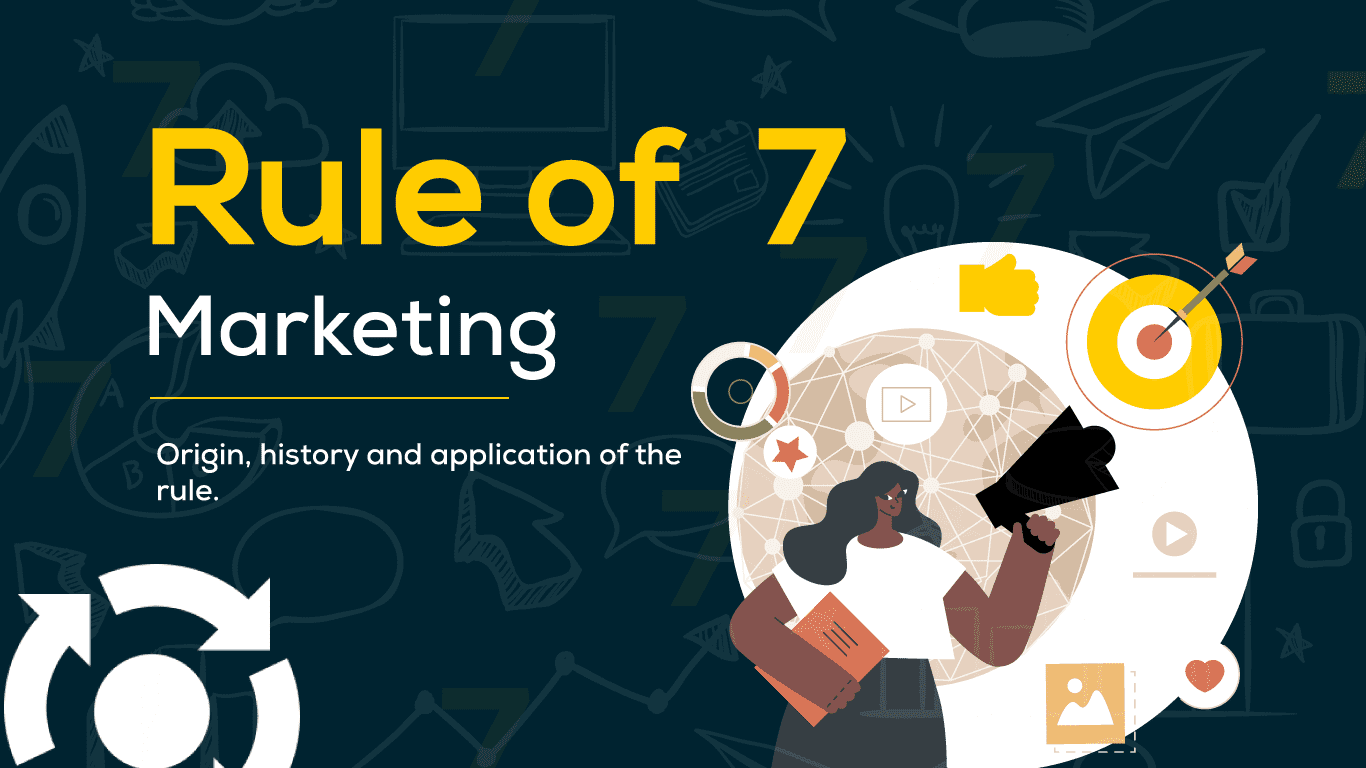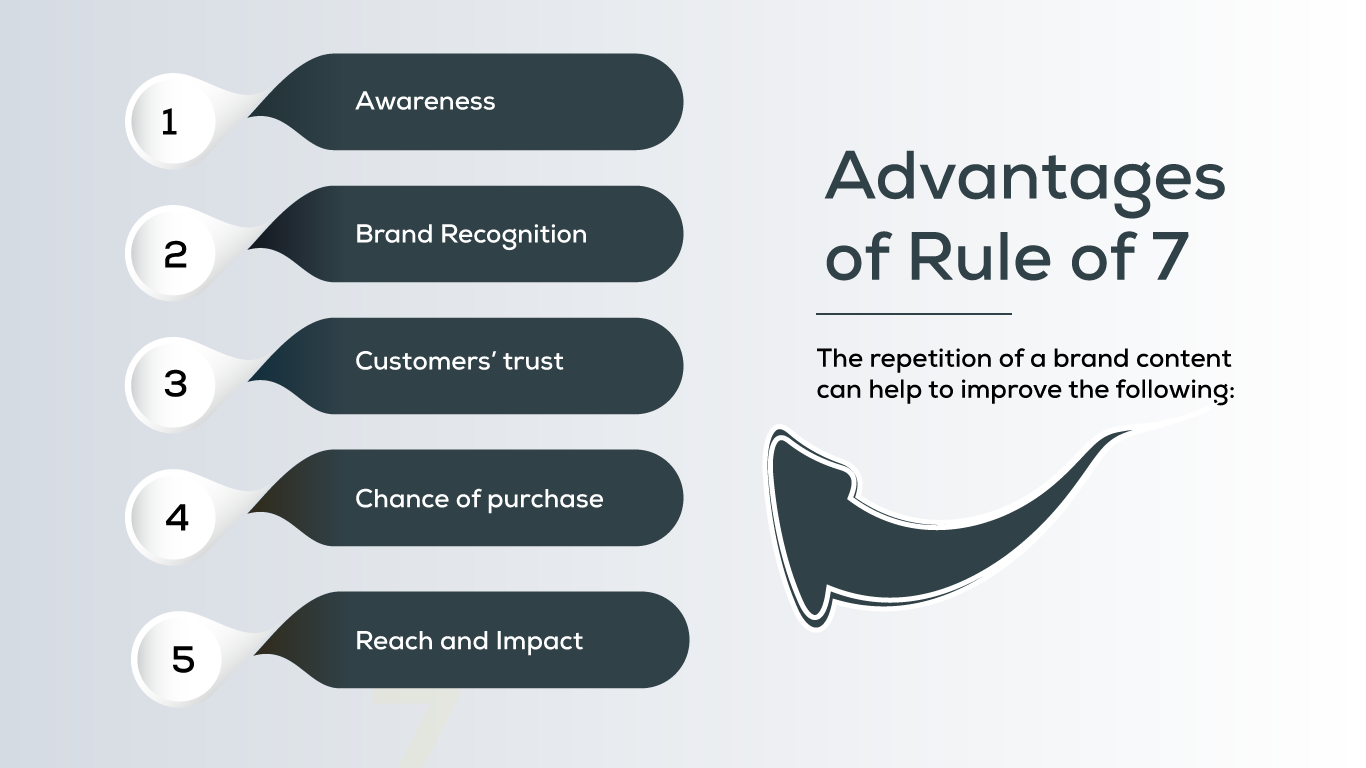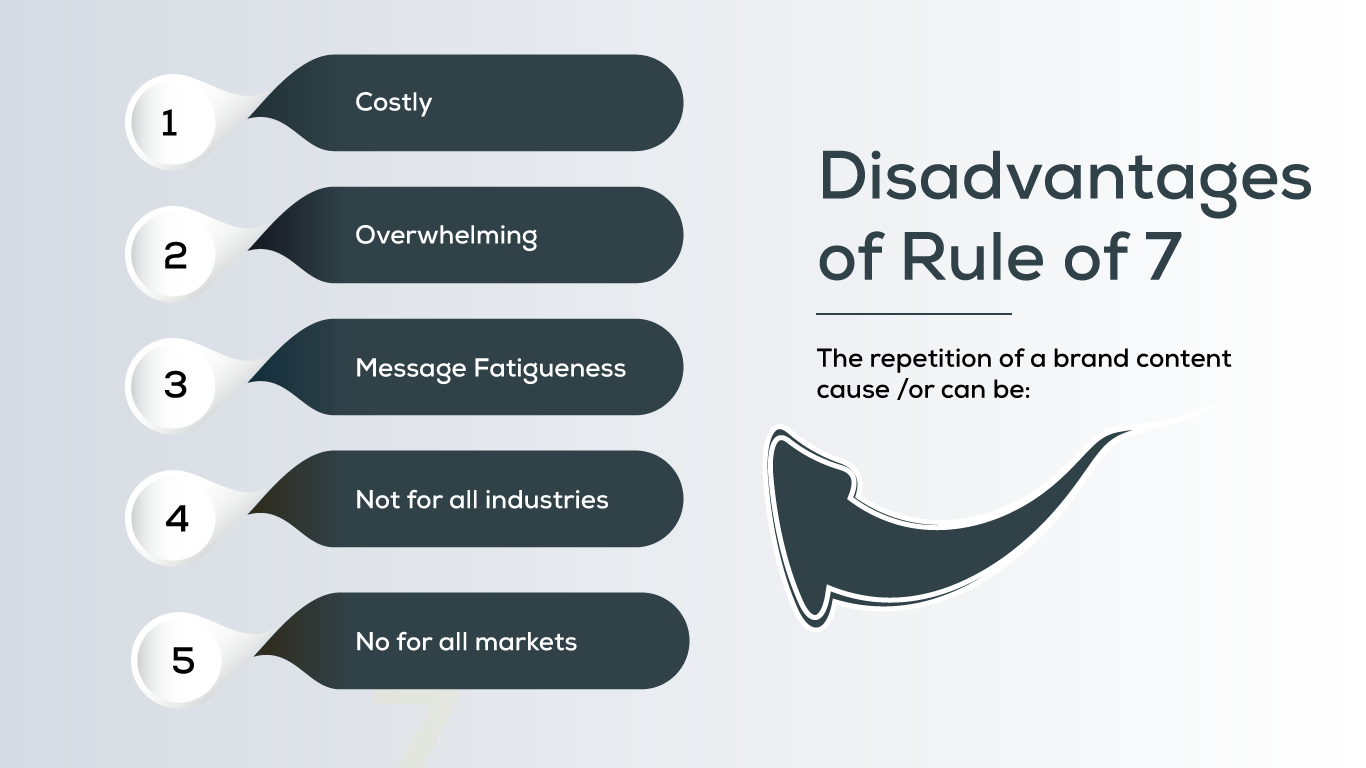The ‘Rule of 7’ is a marketing technique used for many decades and remains relevant today. The idea behind the rule is that a prospect needs to see or hear an advertisement at least seven times before they take action and make a purchase. In this blog post, we will examine the history and origin of the rule and how it is applied in marketing and advertising, including its application to today’s marketing techniques, social media, and B2B marketing.
The origin of the ‘Rule of 7’ is unclear. Still, it is believed to have originated from a study conducted in the 1940s that found it took an average of seven exposures to an advertisement before a consumer would take action and purchase. Since then, the rule has been widely adopted by marketers and has been modified to fit the changing marketing landscape.
One of the most traditional applications of the ‘Rule of 7’ is in advertising. Marketers use this rule to determine the frequency with which they should advertise. For example, if a marketer wants to reach a target audience of 1000 people, they would need to advertise 7000 times (1000 x 7) to achieve the desired impact. This technique is still used today, especially in television and radio advertising.
In today’s digital age, the ‘Rule of 7’ has also been applied to social media marketing. Marketers use social media platforms like Facebook, Instagram, and Twitter to reach their target audience. The ‘Rule of 7’ determines how often a marketer should post on these platforms to reach their target audience effectively. For example, if a marketer wants to reach a target audience of 1000 people on Facebook, they would need to post at least seven times to reach that target audience effectively.
B2B marketing is another area where the ‘Rule of 7’ is relevant. B2B marketers use the rule to determine how often they should reach potential clients. For example, if a B2B marketer wants to reach a target audience of 1000 people, they would need to make at least seven touches (phone calls, emails, direct mail, etc.) to reach that target audience effectively.
Here is a table with five examples of the pros and cons of using the ‘Rule of 7’ marketing technique:
| Pros | Cons |
|---|---|
| Increases Awareness | Can be Costly |
| Improves Brand Recognition | Can be Overwhelming to Customers |
| Helps Build Trust with Customers | Can Result in Message Fatigue |
| Increases Chances of Purchase | May not be Effective for All Industries |
| Increases Reach and Impact | May Not Be Relevant in All Marketing Scenarios |
Pros:
- Increases Awareness: By exposing the target audience to the same message multiple times, the ‘Rule of 7’ can increase overall awareness of a brand, product, or service.
- Improves Brand Recognition: The repetition of a message can help to improve brand recognition and make it easier for customers to remember a company’s offerings.
- Helps Build Trust with Customers: Repeated exposure to a message can help to build trust with customers and position a company as a reliable and trustworthy source of information.
- Increases Chances of Purchase: By consistently reaching the target audience, the ‘Rule of 7’ increases the chances that a customer will eventually purchase.
- Increases Reach and Impact: By increasing exposure to the target audience, the ‘Rule of 7’ can increase the reach and impact of a marketing campaign.
Cons:
- Can be Costly: Implementing the ‘Rule of 7’ can be costly, especially if the marketing campaign involves multiple touchpoints or channels.
- Can be Overwhelming to Customers: Repeated exposure to the same message can overwhelm customers and potentially turn them off to a brand.
- Can Result in Message Fatigue: The repetition of a message can lead to message fatigue, where the target audience becomes bored or desensitized to the message.
- May not be Effective for All Industries: The ‘Rule of 7’ may not be effective for all industries and may not be relevant for some marketing campaigns.
- May Not Be Relevant in All Marketing Scenarios: The ‘Rule of 7’ may not be relevant in all marketing scenarios and may not be the best approach for all businesses.
It’s important to weigh the pros and cons of using the ‘Rule of 7’ when determining the best marketing approach for a business. In some cases, it may be more effective to use alternative marketing strategies that better align with the target audience, business goals, and other factors.
Here is a table with ten real-world examples of industries where the ‘Rule of 7’ is relevant, along with an explanation of how it’s used in each industry:
| Industry | Explanation |
|---|---|
| Automotive | Auto manufacturers and dealers use the 'Rule of 7' to determine the frequency with which they should run advertisements in order to reach their target audience effectively. For example, they may run a TV commercial 7 times in a week to reach a desired number of viewers. |
| Real Estate | Real estate agents and brokers use the 'Rule of 7' to determine how often they should reach out to potential clients. For example, they may make 7 touches (phone calls, emails, direct mail, etc.) in order to reach their target audience effectively. |
| Consumer Goods | Consumer goods companies use the 'Rule of 7' to determine the frequency with which they should run advertisements for their products. For example, they may run a TV commercial 7 times in a week to reach a desired number of viewers. |
| Technology | Technology companies use the 'Rule of 7' to determine how often they should post on social media platforms in order to reach their target audience effectively. For example, they may post on Facebook 7 times in a week to reach a desired number of followers. |
| Healthcare | Healthcare providers and companies use the 'Rule of 7' to determine how often they should reach out to potential clients. For example, they may make 7 touches (phone calls, emails, direct mail, etc.) in order to reach their target audience effectively. |
| Finance | Financial institutions use the 'Rule of 7' to determine the frequency with which they should run advertisements. For example, they may run a TV commercial 7 times in a week to reach a desired number of viewers. |
| Travel | Travel companies use the 'Rule of 7' to determine how often they should post on social media platforms in order to reach their target audience effectively. For example, they may post on Instagram 7 times in a week to reach a desired number of followers. |
| Education | Educational institutions use the 'Rule of 7' to determine how often they should reach out to potential students. For example, they may make 7 touches (phone calls, emails, direct mail, etc.) in order to reach their target audience effectively. |
| Retail | Retail companies use the 'Rule of 7' to determine the frequency with which they should run advertisements for their products. For example, they may run a TV commercial 7 times in a week to reach a desired number of viewers. |
| Food and Beverage | Food and beverage companies use the 'Rule of 7' to determine how often they should post on social media platforms in order to reach their target audience effectively. For example, they may post on Instagram 7 times in a week to reach a desired number of followers. |
It’s important to note that the actual number of exposures may vary depending on the target audience, marketing objectives, and other factors. However, the general principle of the ‘Rule of 7’ remains the same – to achieve a desired impact, marketers must consistently reach their target audience through repeated exposure to their message.












Leave a Comment